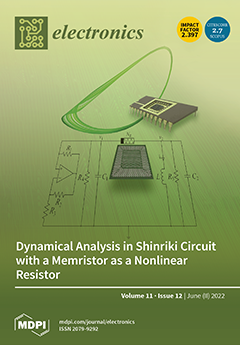With the growth of computing and communication technologies, the information processing paradigm of the healthcare environment is evolving. The patient information is stored electronically, making it convenient to store and retrieve patient information remotely when needed. However, evolving the healthcare systems into smart
[...] Read more.
With the growth of computing and communication technologies, the information processing paradigm of the healthcare environment is evolving. The patient information is stored electronically, making it convenient to store and retrieve patient information remotely when needed. However, evolving the healthcare systems into smart healthcare environments comes with challenges and additional pressures. Internet of Things (IoT) connects things, such as computing devices, through wired or wireless mediums to form a network. There are numerous security vulnerabilities and risks in the existing IoT-based systems due to the lack of intrinsic security technologies. For example, patient medical data, data privacy, data sharing, and convenience are considered imperative for collecting and storing electronic health records (EHR). However, the traditional IoT-based EHR systems cannot deal with these paradigms because of inconsistent security policies and data access structures. Blockchain (BC) technology is a decentralized and distributed ledger that comes in handy in storing patient data and encountering data integrity and confidentiality challenges. Therefore, it is a viable solution for addressing existing IoT data security and privacy challenges. BC paves a tremendous path to revolutionize traditional IoT systems by enhancing data security, privacy, and transparency. The scientific community has shown a variety of healthcare applications based on artificial intelligence (AI) that improve health diagnosis and monitoring practices. Moreover, technology companies and startups are revolutionizing healthcare with AI and related technologies. This study illustrates the implication of integrated technologies based on BC, IoT, and AI to meet growing healthcare challenges. This research study examines the integration of BC technology with IoT and analyzes the advancements of these innovative paradigms in the healthcare sector. In addition, our research study presents a detailed survey on enabling technologies for the futuristic, intelligent, and secure internet of health things (IoHT). Furthermore, this study comprehensively studies the peculiarities of the IoHT environment and the security, performance, and progression of the enabling technologies. First, the research gaps are identified by mapping security and performance benefits inferred by the BC technologies. Secondly, practical issues related to the integration process of BC and IoT devices are discussed. Third, the healthcare applications integrating IoT, BC, and ML in healthcare environments are discussed. Finally, the research gaps, future directions, and limitations of the enabling technologies are discussed.
Full article





